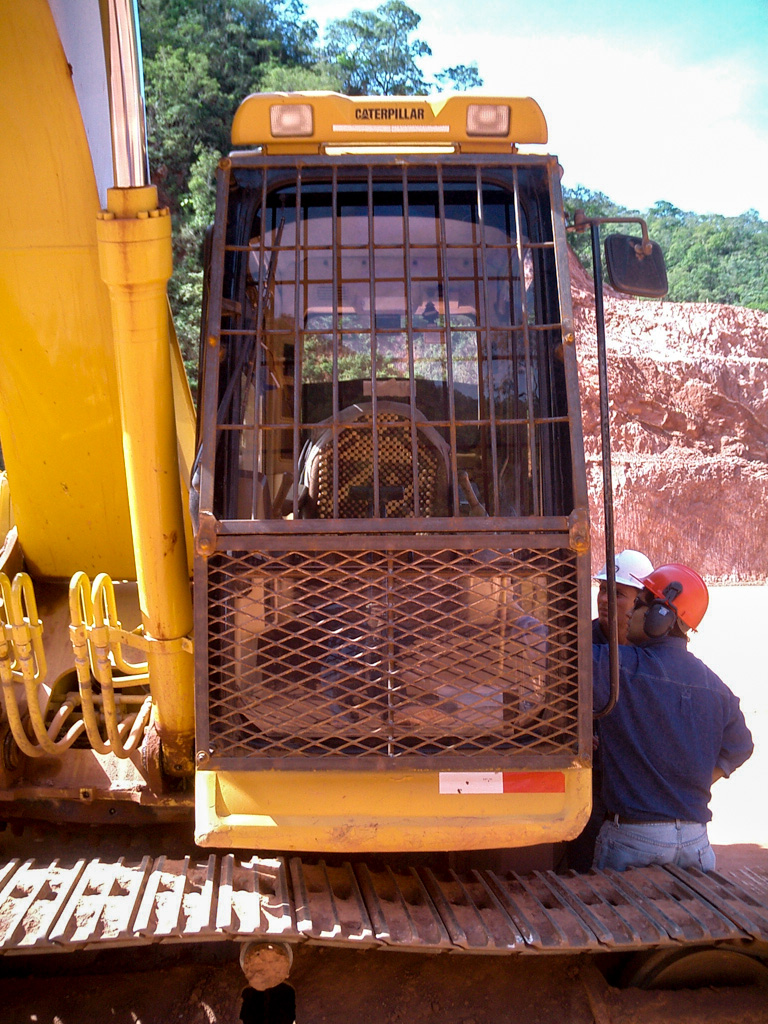Sabalo 7 Access Road and Wellsite Preparation
In early 2005, Fernando Virreira, the owner of Serpetbol approached me. He invited me to be his General Manager. Before accepting, I had to wrap up my previous job, working with Kent Muhlbauer on pipeline risk assessment for Transredes. Serpetbol had a number of ongoing projects. One of these was the building of Sabalo 7 access road and the preparation of the wellsite in the department of Tarija in the south of Bolivia.

The Most Dangerous Operation I had Seen
A month before I started as General Manager, Fernando and I flew down to the Sabalo 7 location for a site visit. After a few minutes on site, I told Fernando that after 25 years working in the oil and gas industry, this was the most dangerous operation I had seen. I recommended he beef up his HSE department and recommended an HSE manager, someone I trusted.

Excavator Accident
Three weeks after I started as General Manager and before our new HSE manager had started, the accident waiting to happen, happened. I was on a trip to Comodoro Rivadavia in Argentina, invited by Chaco on a safety awareness course. I had tickets to spend a week in Argentina and then fly to Australia to visit a potential client. I received a call from Fernando, asking me to return to Bolivia. An excavator had fallen from the mountainside, 70 m to the valley floor. The operator was seriously injured.

Fatal Accident
I cancelled my trip to Australia and flew back to Santa Cruz. By the time I arrived, the operator had died. He had been taken from Sabalo to the nearest airport in Villamontes. His injuries were very serious, and he died before he could be flown to hospital.

Challenging Access Road Construction
The challenging part of the operation was the last 700 m of the access road. Construction equipment had been transported to the location by road along the valley floor. For ecological reasons, Petrobras, the operator, required that the access road be built into the mountainside, 70 m above the valley floor. The hillside was at a 70° angle. The rock was blown up using dynamite. An excavator removed the loose rock, sending it to the valley floor.

The Circumstances
Prior to the accident, a section of the access road had been dynamited. The excavator moved in and cleared away the loose rock. It had reached the end of the section and had a rock wall ahead of it. There was a loose boulder in the wall. The excavator operator, an expert with many years’ experience, pulled the boulder with the bucket which fell towards him. He trapped the boulder with the bucket.

Accident Description
A smaller boulder came loose and bounced into the cabin, breaking the front glass. It fell into the operator’s lap, pushing the controls back towards him. The excavator went into reverse. There was nothing the operator could do. The excavator fell off the cliff, bouncing off the sides of the mountain and crashed into the valley floor, 70 m below.

Medivac
The operator was badly injured but still alive. The site doctor attended to him and he was taken by ambulance to Villamontes. A plane was sent from Santa Cruz, but before he could be taken to the plane, he passed away.

Accident Investigation
On my return to Santa Cruz, as General Manager, I began to investigate what had happened and what could have been done differently to have avoided this accident. One glaring conclusion was that, had the access road been on the valley floor, the excavator would not have had to work at 70 m above the valley floor. Serpetbol had recommended this from the start. But it was rejected because of ecological reasons. It was a condition of the environmental license that the road not be along the valley floor.

Cause of the Accident
The direct cause of the accident was that a small boulder broke the front window and entered the cabin. A steel protective guard over the window would have stopped the boulder entering the cabin. This guard was implemented for the rest of the operation.

Corrective Actions
Another change which we applied was to use techniques used for seismic exploration to drill the dynamite holes. I brought this seismic experience to the project, having previously worked for a brief period with Western Geophysical. If you look closely on the following image, you will see orange overalls in the centre of the picture. These are rock climbing drillers using handheld drills to drill the dynamite shot holes. This was key to the success of the remainder of the operation.

Conclusion of the Project
The access road was completed after a few more months of work. Sabalo has been one of the main fields providing gas for the Gas Sales Agreement with Brazil for the last 19 years. Sabalo 7 was one of the principal wells producing this gas.

